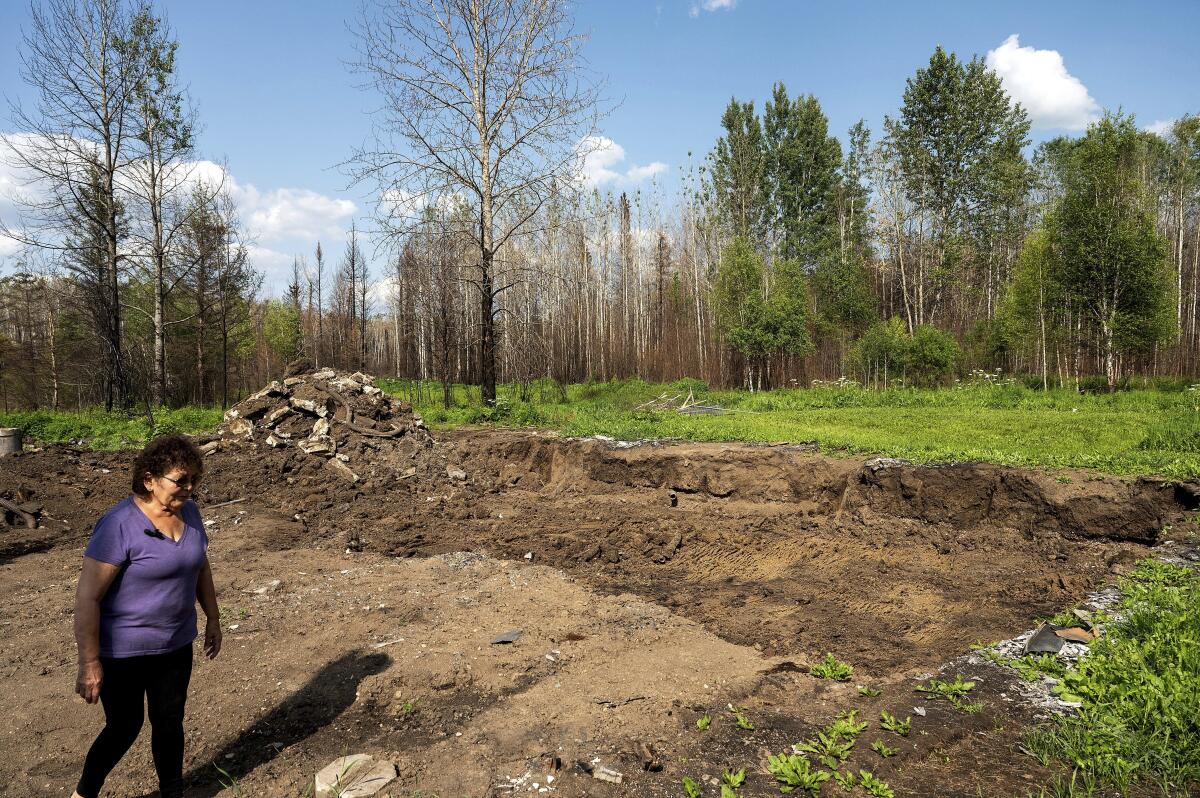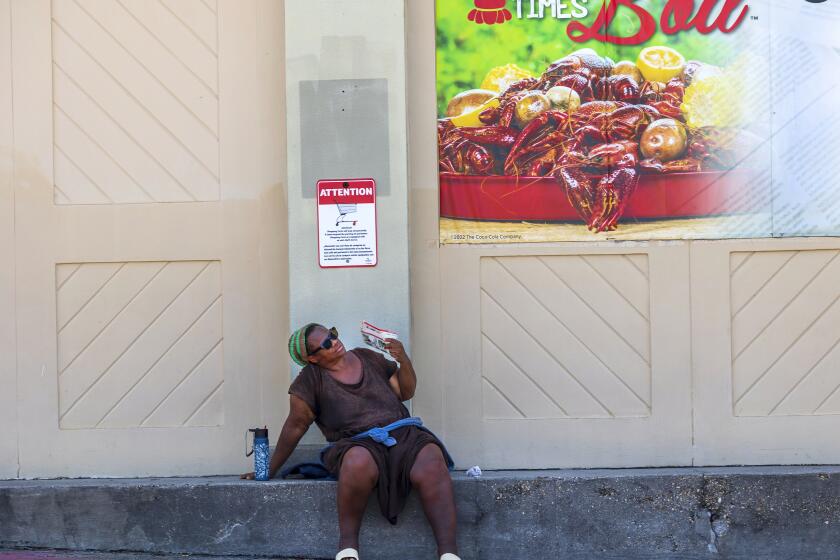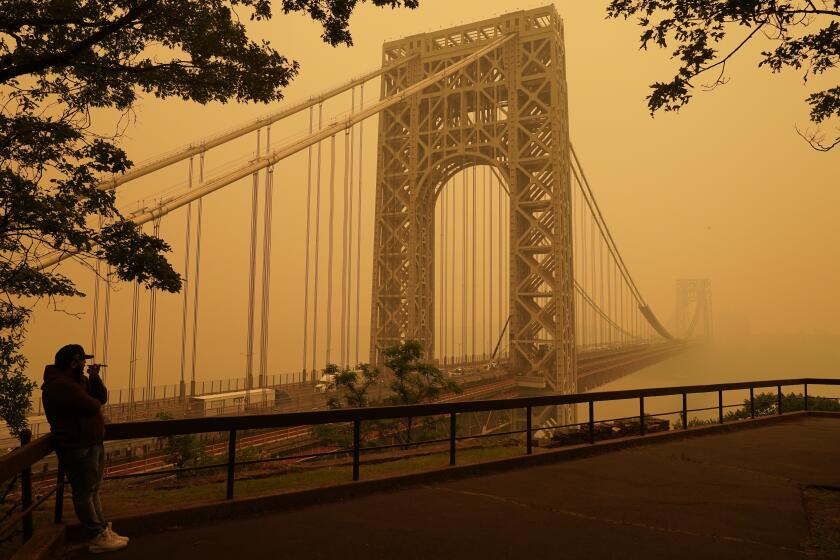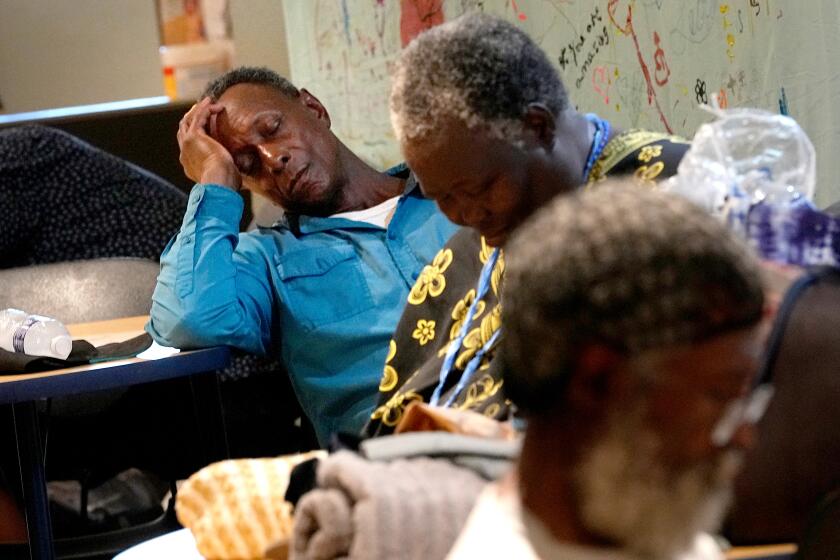Canadian wildfires hit Indigenous communities hard, threatening their land and culture

- Share via
EAST PRAIRIE METIS SETTLEMENT, Canada — Carrol Johnston counted her blessings as she stood on the barren site where her home was destroyed by a fast-moving wildfire that forced her to flee her northern Canadian community two months ago.
Her family escaped unharmed, though her beloved cat, Missy, didn’t make it out before a “fireball” dropped on the house in early May. But peony bushes passed down from her late mother survived and the blackened Mayday tree planted in memory of her longtime partner is sending up new shoots — hopeful signs as she prepares to start over in the East Prairie Metis Settlement, about 240 miles northwest of Edmonton in Alberta province.
“I just can’t leave,” said Johnston, 72, who shared a home with her son and daughter-in-law. “Why would I want to leave such beautiful memories?”
The worst wildfire season in Canadian history is displacing Indigenous communities from Nova Scotia to British Columbia, blanketing them in thick smoke, destroying homes and forests and threatening important cultural activities such as hunting, fishing and gathering native plants.
Thousands of fires have scorched more than 42,000 square miles across the country. On Tuesday, almost 900 fires were burning — most of them out of control — according to the Canadian Interagency Forest Fire Center website.
Floods, fires, extreme heat, awful air quality, warming seas: As extreme weather engulfs the nation, the United States resembles a disaster movie set.
Fires aren’t uncommon on Indigenous lands, but they’re now occurring over such a widespread area that many more people are experiencing them at the same time — and some for the first time — stoking fears of what a hotter, drier future will bring, especially to communities where traditions run deep.
“I’ve never seen anything like this,” said Raymond Supernault, chairman of the East Prairie Metis Settlement, where he said more than 85% of the 129-square-mile settlement burned in the first wildfire there in more than 60 years. Fourteen houses and 60 other structures were destroyed by the intense, fast-moving fire that led to the evacuation of almost 300 people and decimated forested land.
“In blink of eye, we lost so much. … It was devastating. I can’t stress that enough,” said Supernault, who added that he hasn’t seen any elk or moose, both important food sources, since the fire.
“We don’t just jump in the car and go to” the supermarket for groceries, Supernault said. “We go to the bush.”
In Canada, 5% of the population identifies as Indigenous — First Nation, Metis or Inuit — with an even smaller percentage living in predominantly Indigenous communities. Yet more than 42% of wildfire evacuations have been from communities that are more than half Indigenous, said Amy Cardinal Christianson, an Indigenous fire specialist with Parks Canada.
Smoke from Canadian wildfires is pouring into the U.S. East Coast and Midwest and covering the capitals of both nations in an unhealthy haze.
As of Monday, 106 wildfires have affected 93 First Nations communities this year, and there have been 64 evacuations involving almost 25,000 people, according to Indigenous Services Canada.
It’s not uncommon for Indigenous communities to evacuate repeatedly, Christianson said. A recent analysis of the Canadian Wildland Fire Evacuation database found that 16 communities were evacuated five or more times from 1980 to 2021 — all but two of them First Nations reserves, said Christianson.
Fires now “are so dangerous and so fast-moving” that evacuations increasingly are necessary, a challenge in some remote communities where there might be one road in, or no roads at all, said Christianson, who is Metis.
Ken McMullen, president of the Canadian Assn. of Fire Chiefs and fire chief in Red Deer, Alberta — a province where about 7,600 square miles have already burned, compared with just over 695 square miles in all of 2022 — said some places burning again this year haven’t fully recovered from previous fires.
“It’s going to take a long time,” said McMullen, calling it the worst fire season in Canadian history. “These are life-altering events.”
Christianson said the effects will be felt for generations, because the intense heat is burning the soil and making it difficult for trees and other plants to regenerate.
Las Vegas and Phoenix have always endured broiling summers, but the scale and duration of this heat wave has brought new levels of misery.
She said Indigenous communities are increasingly vulnerable because they’re often left out of decisions about forest management and fire response. What’s more, when fires affect urban centers at the same time, fire suppression shifts to larger communities.
Indigenous communities “really want to be leaders in managing fires in their territory,” including a return to preventive burning that was long suppressed by the government, Christianson said.
The Algonquins of Barriere Lake in northern Quebec province evacuated in June because of heavy smoke from wildfires that came within nine miles of and almost surrounded the reserve where about 350 to 400 people live, often miles apart, said Chief Casey Ratt, who never experienced a forest fire before this year.
“Last year, me and my wife were talking about how many fires there were in Alberta, then boom! There were so many in Quebec this year,” said Ratt. “I was like, ‘Oh my gosh, now we’re dealing with wildfires like they are out west.’”
Record heat. Raging fires. What are the solutions?
Get Boiling Point, our newsletter about climate change, the environment and building a more sustainable California.
You may occasionally receive promotional content from the Los Angeles Times.
But it also wasn’t a total surprise, said Ratt, because summer heat is more intense and ice forms later in the winter and melts faster in the spring.
“Something is happening,” said Ratt, who believes climate change is largely to blame. “I think this will be the norm moving forward.”
The biggest concern is whether cultural traditions that have been passed down from generations of elders will survive, said Supernault, of the East Prairie Metis Settlement.
“Our Earth is changing ... and our traditional way of life is now put on hold,” Supernault said. “You can’t put a price on culture and traditional loss.”
More to Read
Sign up for Essential California
The most important California stories and recommendations in your inbox every morning.
You may occasionally receive promotional content from the Los Angeles Times.













